the room where the organ was
11 October 2023
Introduction
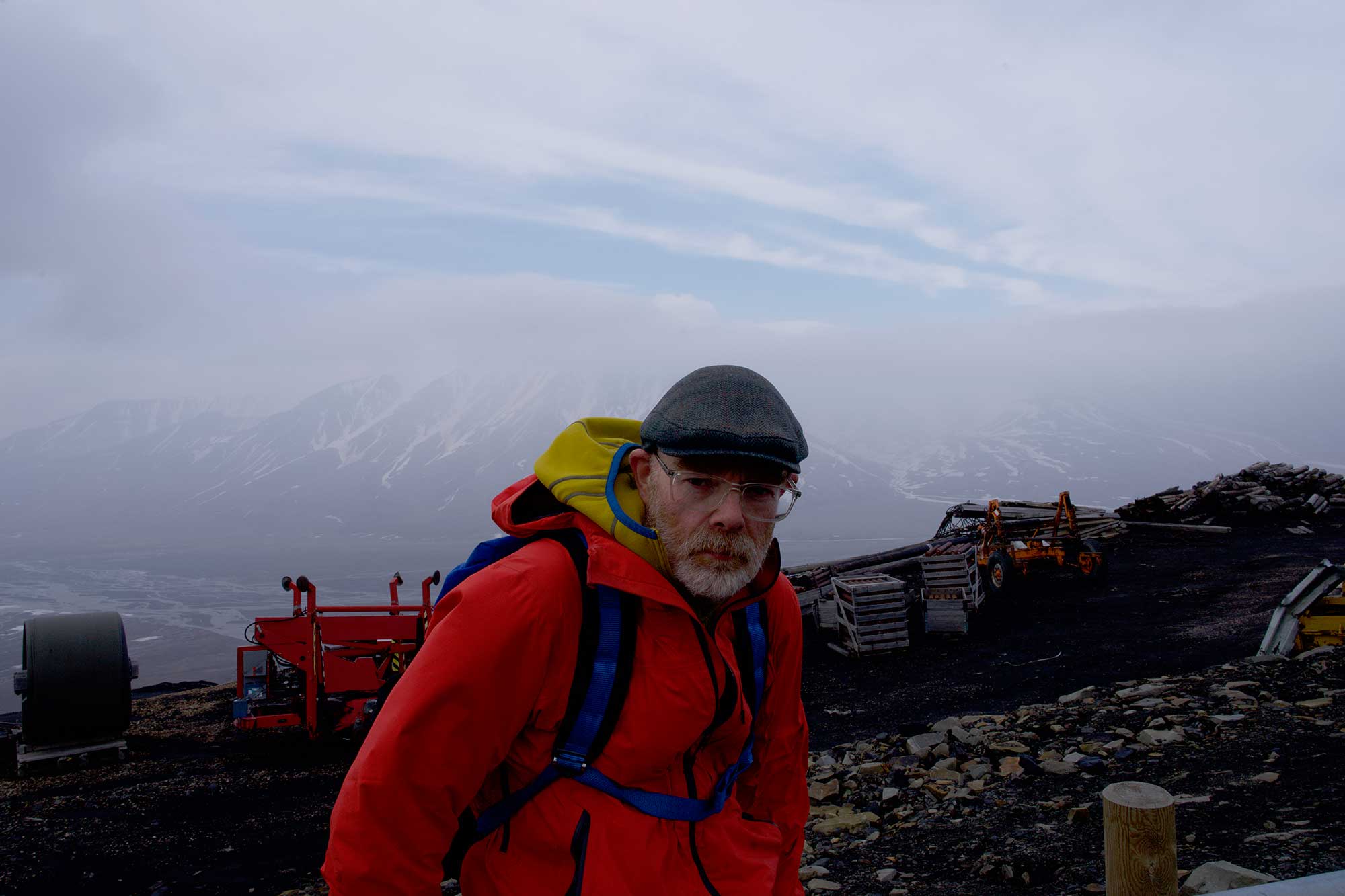
Mark Fell © https://www.markfell.com/web/
Throughout 2022-23, the RNCM celebrated its 50th Anniversary – a significant birthday and milestone along our continued mission to define the future of music.
At the height of the year-long celebration was Made in Manchester, a three-day festival that took place in May 2023, showcasing the amazing breadth of new music created at the RNCM by our staff and students, past and present. The festival invited inquisitive listeners to a powerful experience of contemporary music in a variety of genres and settings, offering an impressive opportunity to experience how the sounds of today are shaping the music of tomorrow.
As part of the festival, PRiSM invited the critically-acclaimed artist Mark Fell to collaborate with eight RNCM composition students to create the room where the organ was (2023) – a new installation project for the multichannel Meyer’s Constellation system in the RNCM’s flagship music technology resource Studio 8. Combining frequency modulation synthesis with new recordings of woodwind instruments through guitar effects pedals, the project celebrates the studio’s previous life in housing the College’s chamber organ, creating and deconstructing an imaginary electric instrument that negotiates with a multidimensional emergence.
In this PRiSM Blog, Fell reflects upon how his vision of the project facilitated his close collaboration with the RNCM student composers, and how these led them to collectively explore a multitude of connections between sounds, space, history, and technology.
the room where the organ was
By Mark Fell
In collaboration with Devon Bonelli, Connor Cox, Joe Hunt, Joel Kupiainen, Emmy Lambert, Tanguy Pocquet, Pablo Sonnaillon, James Weatherley-Buss, and generously supported by Dr Larry Goves (RNCM School of Composition)
My invitation from PRiSM to develop a piece for the Meyer Constellation system in the RNCM’s Studio 8 was one of a few projects that coincided with my slow re-emergence into travel.
As a carer for elderly parents, my covid lockdown was extreme and prolonged; and I was more cautious than most of my peers in returning to multiple flights and crowded venues. More significantly, the shift in behaviours and working patterns that covid necessitated knocked me off a professional hamster wheel, one that had been getting faster over decades.
So I looked at this opportunity a bit differently – I had a bit more time, I wanted to use that time to explore, try things, perhaps be a bit less targeted.
Of equal importance, to me, were the various contexts within which the room and its technology were placed. For some reason it just felt a bit wrong to turn up, make something, give it a grand opening, shake some hands, and leave. So I decided to run the project as a workshop where participants collectively and collaboratively develop and install a piece of work. In this sense my role would be more creative mentor rather than creative director.
In many ways this decision added more work: more time on site, more time developing the piece, more time negotiating unforeseen issues, as well as the likelihood of difficult group dynamics, personal dramas and the like. But this all seemed more appealing, somehow more relevant.
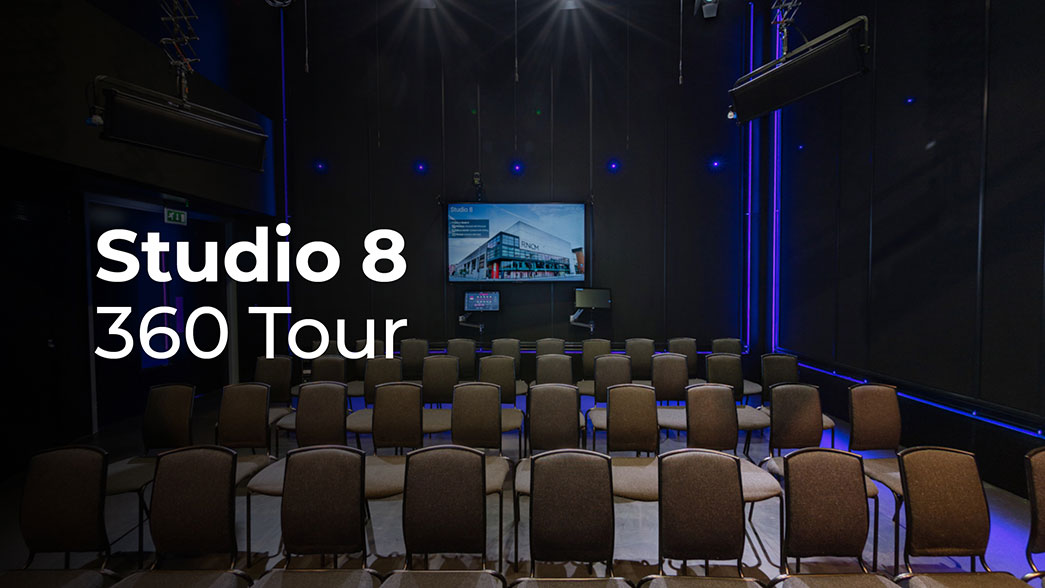
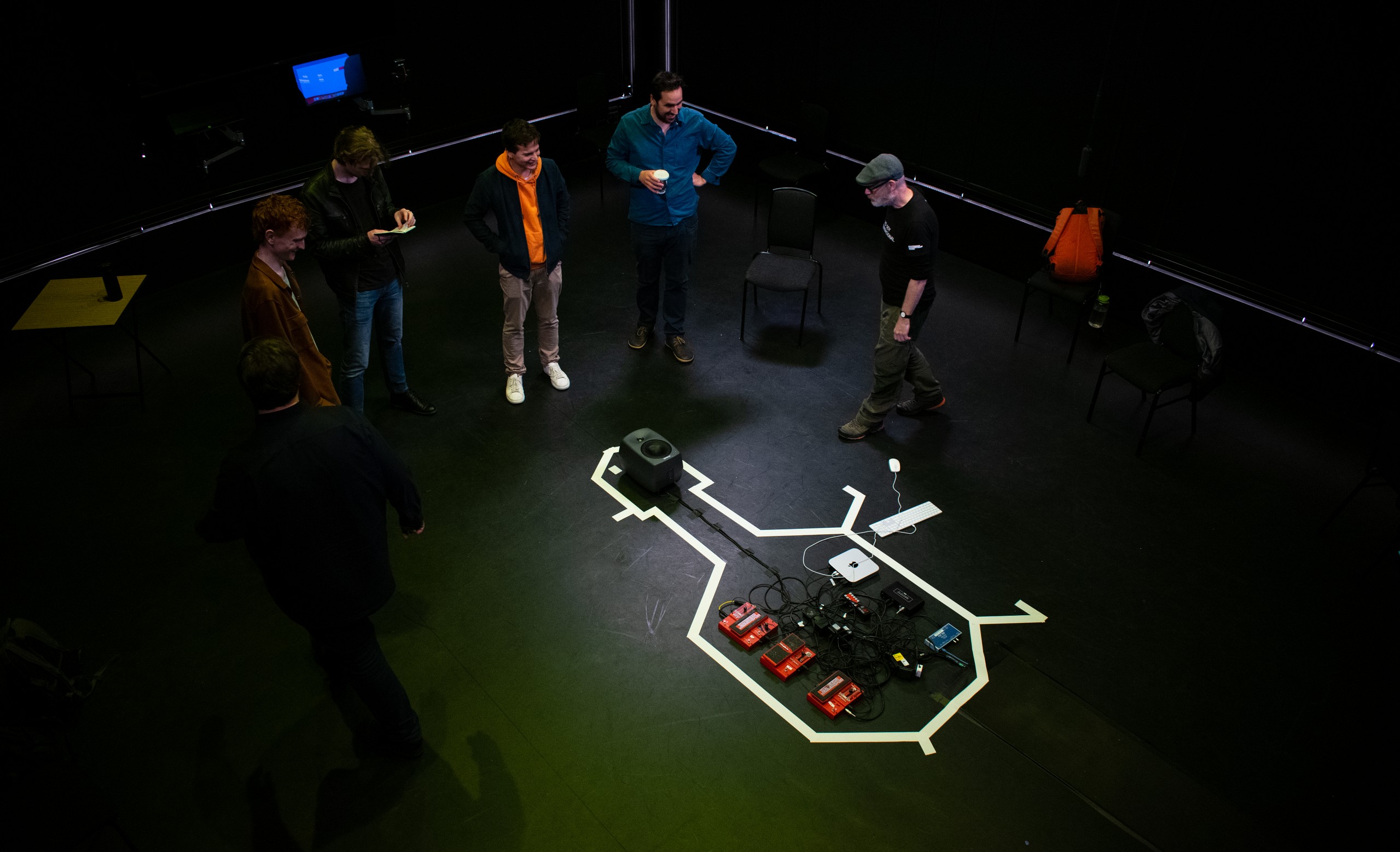
From left to right: Larry Goves, James Weatherley-Buss, Joel Kupiainen, Tanguy Pocquet, Pablo Sonnaillon, Mark Fell. Documentation by Emmy Lambert.
In some ways leading a group, or facilitating a workshop is a bit like a performance. Here I don’t mean because the artist has increased presence or power, but in the structure of the workshop or performance. My particular concern is emergence, and an exploration of procedural systems, interpersonal frameworks, processes and structures (etc) that make space for emergence. So after some brief introductions I began the first session with a question: “what questions do we need to ask in order to make this work?”
For me embarking on a project is never so much about an idea as a starting point, and much more about questions: what is the space like? what technologies does it contain? how do these work? what is the building’s history? what else is happening at the event? and so on. There is a practicality to this approach, grounded in real-world situations, and commensurate with this is an ideological position where making work is never seen as the accurate realisation of previously imagined aesthetic intentions.
I took every opportunity to underline this principle: that each issue or hurdle should be met as an opportunity to expand one’s understanding of the work, and furthermore our aesthetic expectations of it. The environment is constantly offering multiple paths.
At some point we collectively acknowledged the history to Studio 8: “the room where the organ was”. The title is perhaps the most important component of any work. Here it prompted discussion on the similarities between the organ as a systematised approach to harmonic modelling, and Meyer’s Constellation as modelling room acoustics. The logic of both, perhaps, to offer general purpose methods for controlling patterns of resonance.
From this discussion we developed primitive organ models in Max/MSP using two operator FM synthesis, and also recorded acoustic instruments based around blown tubes. With Max and RNBO we made an external with an MC wrapper so that we could quickly assign a two operator FM oscillator to each of the 28 speakers in the Meyer array. Each was given a fixed frequency. We divided the phase of a low frequency sinusoidal oscillator into 28 segments each of which controlled the synthesis parameters of a distinct FM oscillator, creating gradually sweeping harmonics and geometries.
The acoustic materials were placed in the centre of three of the room’s walls. These were also fed through effects pedals to a central additional speaker, so that the dry acoustic sounds from the perimeter were combined with effected sounds from a central position. Levels of change, density and deviation were explored.
I really enjoyed my time working on this project. The students were brilliant and I was happy to see they got something from it. For me personally it was in some ways a new approach to group work, combining my installation practice with a workshop structure. And I will take this with me into further projects. I want to thank PRiSM and RNCM for inviting me, supporting my suggestions, and being welcoming hosts.
Acknowledgement
This work is supported by PRiSM, the Centre for Practice & Research in Science & Music at the Royal Northern College of Music, funded by the Research England fund Expanding Excellence in England (E3).
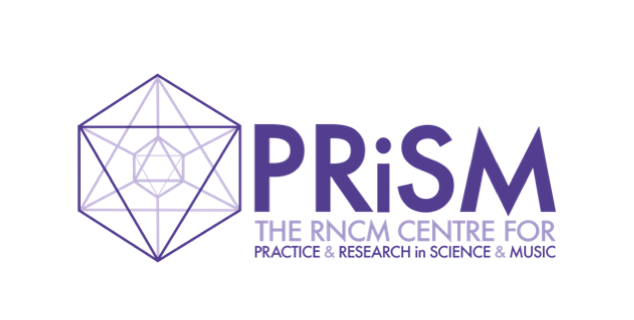
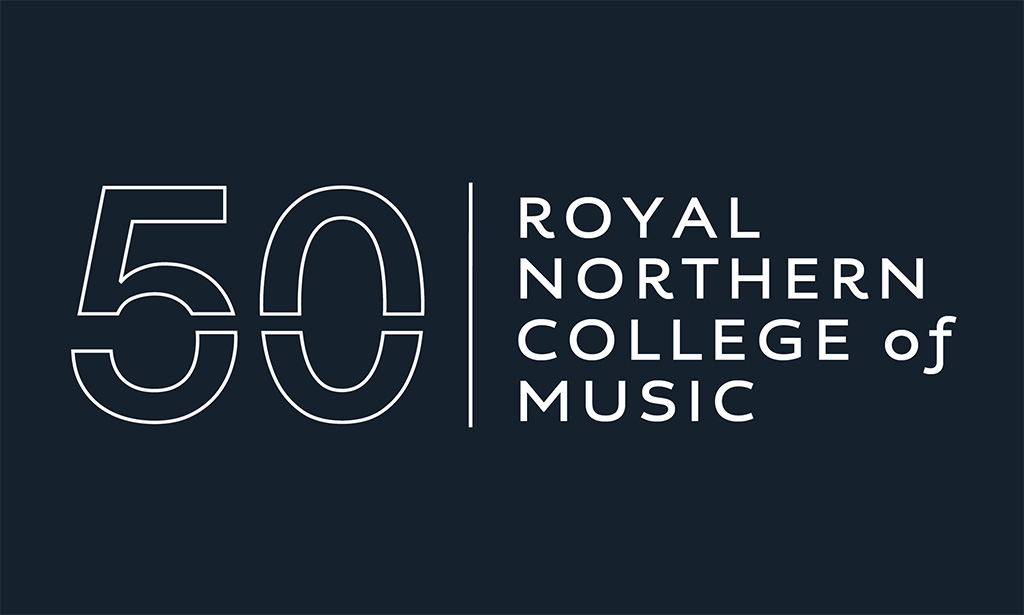
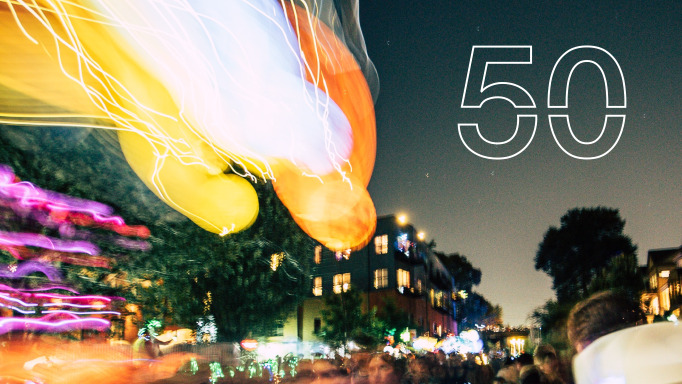
![]()

